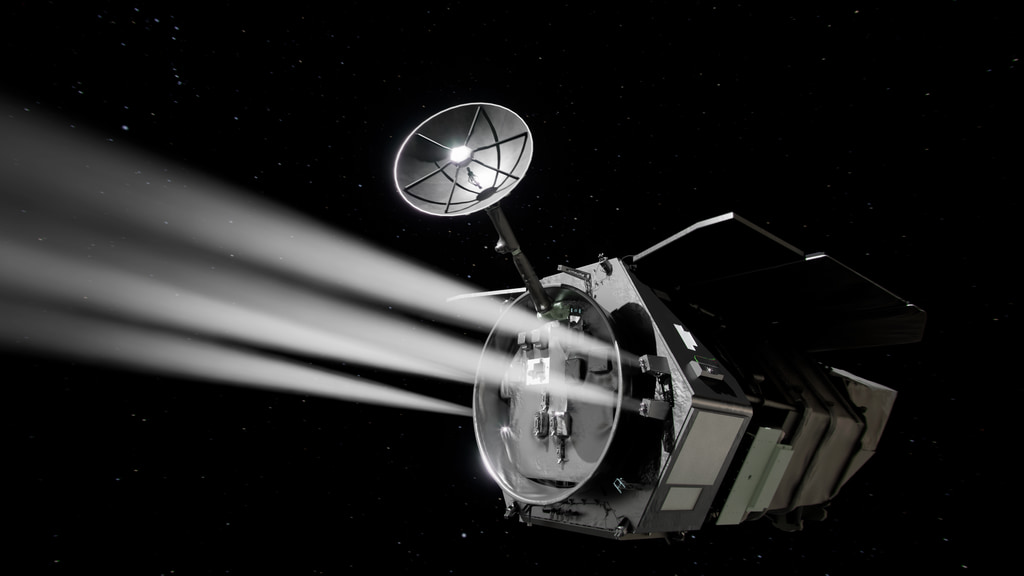Moving Roman - Reaction Wheels
Moving Roman: Reaction Wheels. Watch this video to learn more about how reaction wheels work and how they will be an essential part of pointing the Nancy Grace Roman Space Telescope.
Credit: NASA's Goddard Space Flight Center.
Music credit: "Breaking the Code" from Universal Production Music
Watch this video on the NASA Goddard YouTube channel.
Complete transcript available.
There are two systems that are responsible for moving the Nancy Grace Roman Space Telescope: thrusters and reaction wheels. They use very different methods and have different purposes. This two-part video series explores the two and the roles they play in moving Roman. See the second half here.
Reaction wheels are an essential part of moving most space telescopes. They are basically flywheels driven by electric motors, which makes them more precise than thrusters and capable of running indefinitely on solar power. They spin to store angular momentum. By slowing or speeding the rotation of a given wheel, changing the amount of momentum, a computer can precisely adjust how the spacecraft points around its center of mass in one plane. With three wheels set at specific angles, a satellite can control its pitch, roll and yaw to point in any direction and then hold that position without any change.
NASA’s Nancy Grace Roman Space Telescope has added its set of reaction wheels to the main spacecraft body, or bus. Roman has six reaction wheels, rather than the necessary three, to give it more angular momentum for faster pointing, as well as complete redundancy should any one wheel fail.
Each of Roman’s wheels is 18 inches across – about the size of an extra-large pizza – weighs roughly 45 pounds and spins up to 4,000 rpm.
Vertical version of the above edited to under one minute for social media.
Credit: NASA's Goddard Space Flight Center.
Music credit: "Breaking the Code" from Universal Production Music
Same as the above with captions burned in to video.
Credit: NASA's Goddard Space Flight Center.
Music credit: "Breaking the Code" from Universal Production Music
Credits
Please give credit for this item to:
NASA's Goddard Space Flight Center. However, individual items should be credited as indicated above.
-
Producers
- Scott Wiessinger (KBR Wyle Services, LLC)
- Sophia Roberts (Advocates in Manpower Management, Inc.)
-
Animators
- Jonathan North (KBR Wyle Services, LLC)
- Krystofer Kim (KBR Wyle Services, LLC)
-
Videographer
- Sophia Roberts (Advocates in Manpower Management, Inc.)
-
Narrator
- Scott Wiessinger (KBR Wyle Services, LLC)
Release date
This page was originally published on Tuesday, April 23, 2024.
This page was last updated on Tuesday, April 23, 2024 at 10:47 AM EDT.

